BLACK-FACED SPOONBILL (PLATALEA MINOR).
Breeds only on some offshore islands off the west coast of Korea. Winters in Southern China, Hong Kong, Taiwan and Northern Vietnam. Entire population at
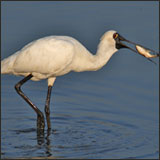 |
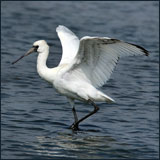 |
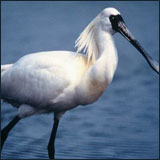 |
BLACK-NECKED CRANE (GROS NIGNICOLLIS).
lndia,China, Bhutan. High altitude bogs and marshy fringes of great lakes.
Early in this century, many ‘thousands’ were reported in the wintering
grounds in western China. The Indian population in Ladakh is bare half a dozen
breeding pairs, and these
 |
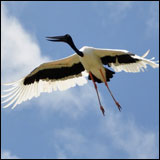 |
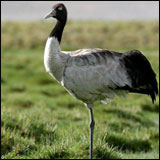 |
BLACK-NECKED STORK (XENORKYNCHUS ASIATICUS).
India, Burma, Thailand, Cambodia, Laos, New Guinea. Freshwater swamps, rivers,
lakes. Widespread but there has been an alarming fall in numbers over the
past few years. Disturbances from human activities and direct persecution
seem to be the major problems for this bird. A complete status survey is urgently
called for. The survival of this species seems possible only in large, protected
wetland areas.
BLAKISTON’S FISH-OWL (KETUPO BLAKISTONI).
Easter USSR, NE China and Japan. a survey in 1984 revealed barely 50 birds
in
 |
 |
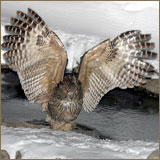 |
BROWN-BANDED RAIL (RALLUS MIRIFICUS).
No reports in recent years. Very rare. Collar and Andrew (1988) inform that
it is known train only two localities in the Philippines. Detailed surveys
necessary to find out more about status.
CHINESE (SCALED) MERGANSER (MERGUS SQUAMACTS).
Breeds in SE Siberia, China and Korea. Wintering areas in China face many
problems. Both, breeding and wintering grounds need to be properly surveyed
and monitored. Some protected areas give limited protection to this species.
CHINESE (SWINHOE’S) EGRET (EGRETTA EALOPHOTES).
China, Korea. Formerly a widespread species. Good numbers were sighted during
recent surveys. The coastal wetlands, tidal flats
 |
 |
 |
.
CHINESE CRESTED TERN (STERNA BERNSTEINI).
Possibly extinct. Recent reports of the species’ presence in China (1978) and Thailand (1980) seem doubtful.
LOGGERHEAD TURFLE(CARELTACARETIA).
Almost world-wide. Not much is known except that major losses of sandy beaches
has robbed the species of prime nesting habitat. Capture in trawls and egg
collection too serious problems. Largest known population is in Oman, West
Asia, where some 30,000 breeding females have been recorded on Masirah Island.
The recent Gulf war could have severely affected the species in this region
of Asia.
MALAYSIAN GIANT TURTLE (ORLITIA BORNEOENSIS).
Malaysia and Indonesia. Freshwater turtle. Uncommon. Listed as "Insufficiently
known" in the IUCN Red List. Reported from only two sites.
MUGGER OR MARSH CROCODILE (CROCODYLUS PALUSINIS).
Indian subcontinent. Range has considerably reduced over the past few decades.
Locally not uncommon in protected areas.
 |
 |
 |
NEW GUINEA CROCODILE (CROCODYLUS NOVAEGUINEAE).
Papua New Guinea. Fairly common and widespread but current direct and regular
persecution needs to be urgently controlled.